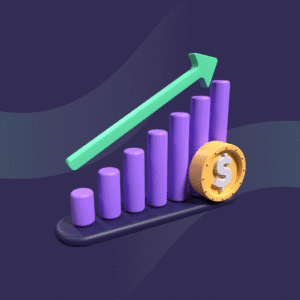Understanding the notions of growth and pullbacks is critical not only for investors and entrepreneurs, but also for anybody trying to navigate complicated systems, whether in markets, personal finance, or corporate strategy.
What is Growth?
Growth refers to an increase in value, size, or performance over time. In financial markets, growth often manifests as rising stock prices, expanding revenues, increased GDP, or improving productivity. In business, growth can be seen in terms of customer acquisition, market share, product development, or profitability.
There are several types of growth:
- Organic Growth: Expansion through internal resources—like increased sales, operational efficiency, or new product launches.
- Inorganic Growth: Growth through mergers, acquisitions, or partnerships.
- Exponential Growth: A compounding increase over time, often seen in tech startups and innovation-driven sectors.
- Sustainable Growth: Balanced, long-term expansion that considers operational capacity, market demand, and risk management.
In every form, growth signals positive momentum. However, no growth path is entirely linear, and that’s where pullbacks come into play.
What are Pullbacks?
A pullback is a temporary reversal in the trajectory of growth, typically seen as a decline or contraction following a period of advance. In stock markets, a pullback is a short-term drop in prices, often viewed as a healthy correction rather than a full-blown bear market. In business, it could take the form of reduced earnings, slowing sales, or strategic restructuring.
Pullbacks serve several important purposes:
- Correction of Overvaluation: Prices or performance may become unsustainably high; a pullback brings them closer to realistic levels.
- Market Psychology Reset: Investor or consumer sentiment often drives irrational exuberance; pullbacks realign expectations.
- Strategic Pause: For businesses, a pullback can be a signal to reassess, reallocate resources, or pivot direction.
- Stress Testing: Pullbacks reveal weaknesses in strategy, leadership, or systems—offering opportunities for improvement.
The Relationship Between Growth and Pullbacks
Growth and pullbacks are two sides of the same coin. Pullbacks are not inherently negative; in fact, they are often necessary for long-term stability and progress. Just as muscles grow through cycles of exertion and recovery, markets and organizations develop resilience through periodic contractions.
Consider the economic cycle: it typically moves through expansion, peak, contraction, and trough phases. These cycles reflect how economies grow, cool off, and recover in response to internal and external forces. Ignoring pullbacks or interpreting them only as failures can lead to misinformed decisions, panic selling, or poor resource planning.

Example: Stock Market Pullbacks
In the U.S. stock market, pullbacks of 5–10% are common and occur several times a year. These are not signs of market collapse but rather natural pauses. More severe corrections (10–20%) or bear markets (declines of 20% or more) may indicate broader economic issues—but even these are followed, historically, by periods of recovery and growth.
Example: Business Growth and Recalibration
A fast-growing startup may face a pullback when scaling challenges emerge, such as customer churn, cash flow issues, or operational bottlenecks. Addressing these setbacks often results in a stronger, more sustainable business model.
Navigating Growth and Pullbacks: Key Principles
- Embrace Pullbacks as Learning Moments
Instead of fearing setbacks, analyze them. What caused the slowdown? What can be optimized? Resilience is built through iteration. - Avoid Overleveraging During Growth Phases
Exuberant growth can lead to overconfidence. Maintaining prudent financial and operational discipline protects against the risks of downturns. - Stay Long-Term Focused
Whether investing or building a company, focus on fundamentals and long-term objectives rather than reacting to every short-term dip. - Diversify and Hedge Risks
Diversification can cushion the impact of pullbacks in specific sectors or investments. Strategic hedging also helps manage volatility. - Communicate Transparently During Pullbacks
For businesses and leaders, how setbacks are communicated can determine public and investor confidence. Honesty and clear action plans matter.
For More Business News Click Here >>> http://Theirsondiary.com









